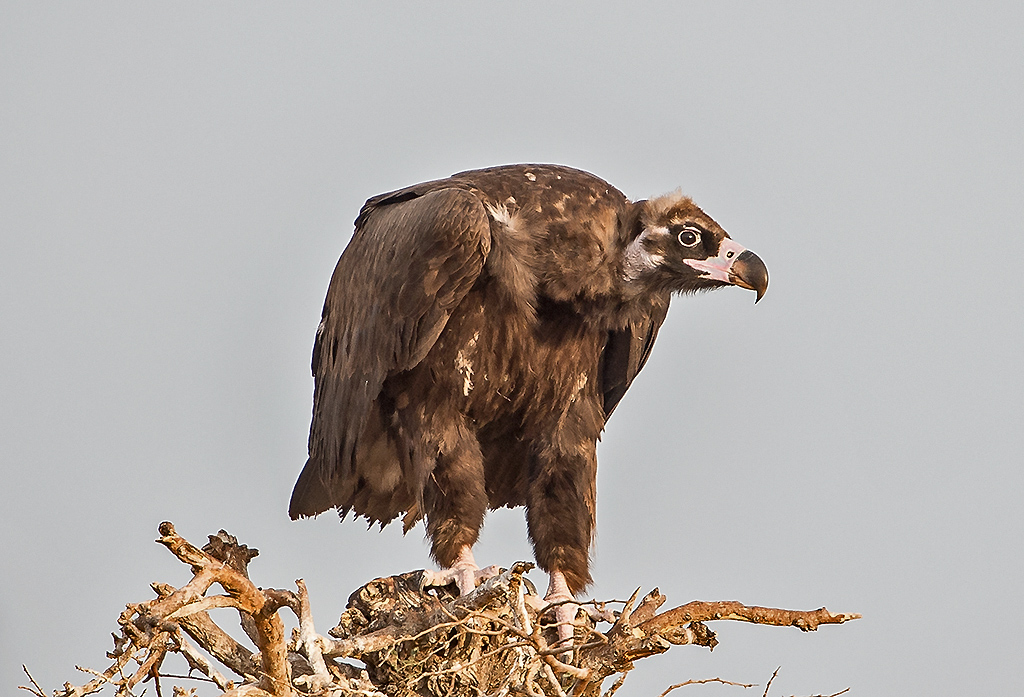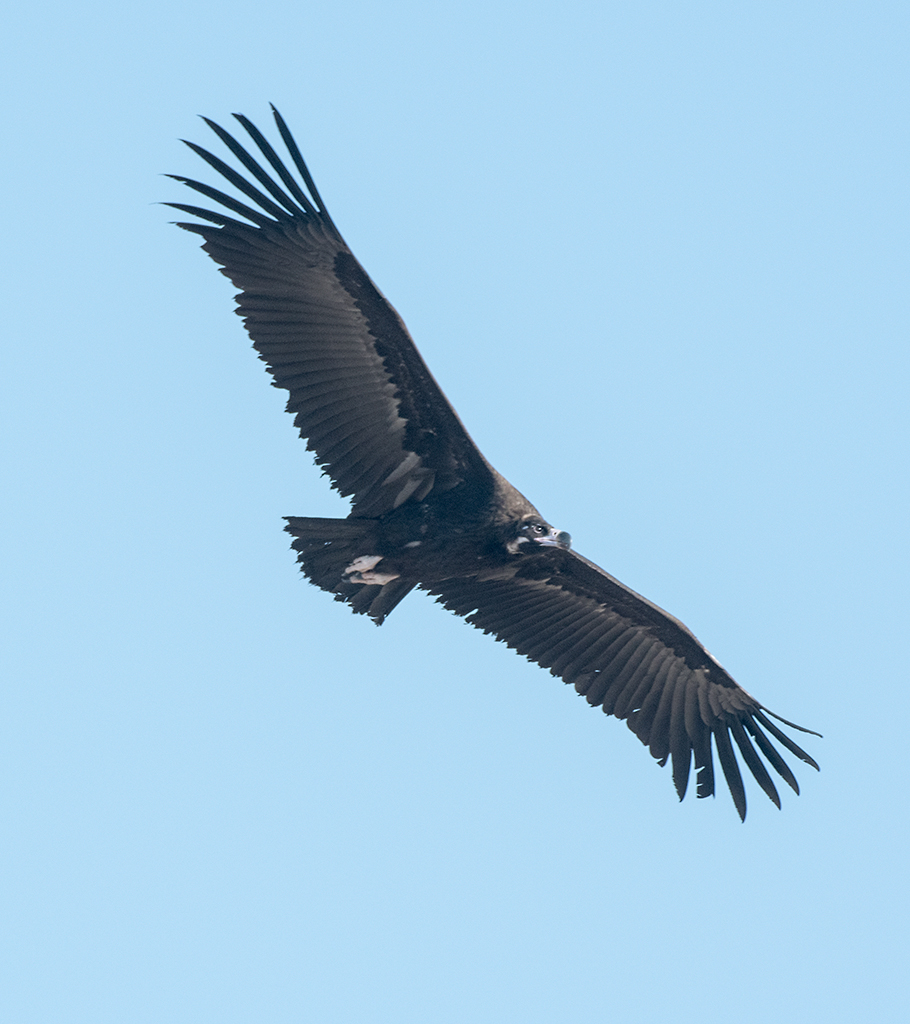Eurasian Black Vulture (Aegypius monachus)
Measurements: 1.0-1.1m long; wingspan 2.5-2.9m.
ID: Huge all-dark vulture, lacking Eurasian Griffon’s two-toned pattern below. Wings long and parallel edged, with saw-toothed trailing edge. Not very sociable.
Not many birds can intimidate a pack of feeding Griffons, but when this enormous vulture comes down to feed, making a low glide with feet and tail up (Griffons come in with feet dangling), all other scavengers scatter – one might say that the atmosphere changes! This vulture has a massive bill, and it is highly aggressive at a carcass, ruffling its neck feathers to remind all of its dominance.

By Koshy Koshy from Faridabad, Haryana, India – Cinereous Vulture., CC BY 2.0, https://commons.wikimedia.org/w/index.php?curid=58812205
One might expect this largest of European vultures to feed primarily on the carcasses of grazing animals. But in fact this isn’t the case. In Spain it now subsists primarily on dead rabbits, and it can get by on small, isolated pickings. And the exceptionally large bill, despite giving it first refusal when it does join other vultures, is actually adapted for taking the harder, more difficult remains of dead animals rather than soft tissue: tough bits of muscle, skin and sinews. This adaptability has probably helped the Black Vulture to survive in Europe’s impoverished environment.

By Koshy Koshy from Faridabad, Haryana, India – Cinereous Vulture, CC BY 2.0, https://commons.wikimedia.org/w/index.php?curid=110194302
Black Vultures are much less sociable than other typical vultures; it is rare to see more than one or two at a time. They are also more territorial, working a large but well defined section of country. Nests are generally, but not always, some distance apart; where they are closely packed aggression between neighbours is rife.
This rare vulture builds a large stick nest in a tree, not very high up, only between 1.5m and 5m above ground; it only rarely uses cliff sites, as Griffons do.
From ‘Birds: A Complete Guide to All British and European Species’, by Dominic Couzens. Published by Collins and reproduced with permission.
